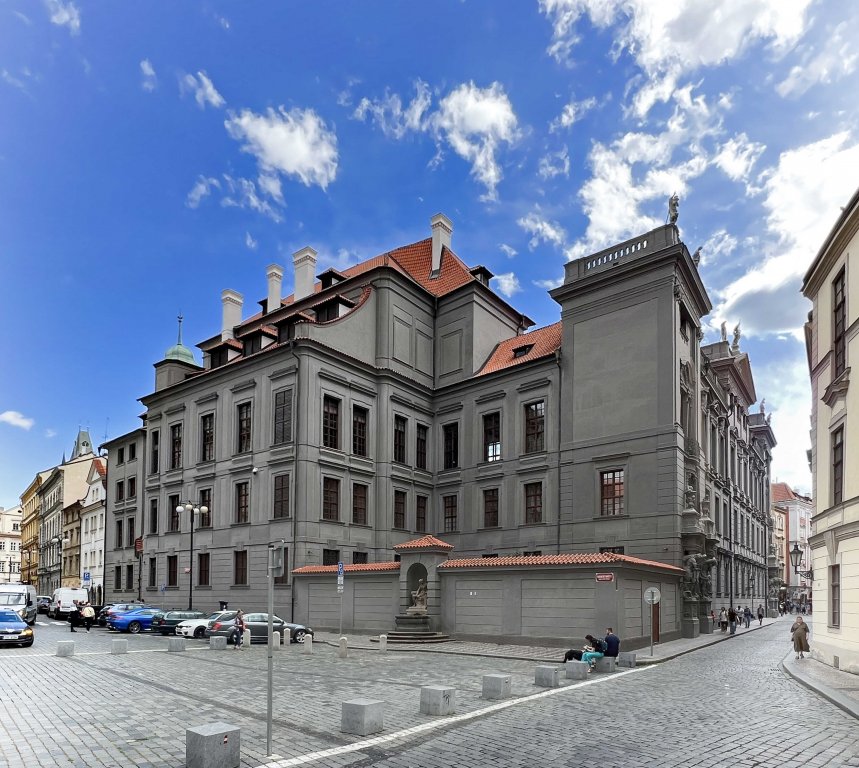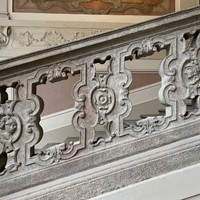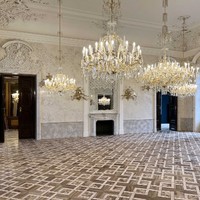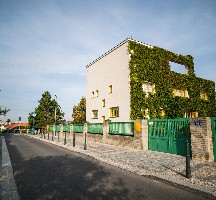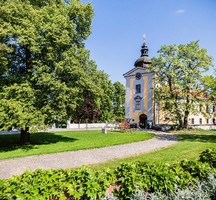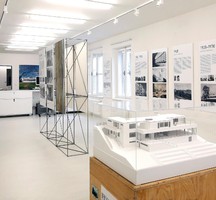Breadcrumbs navigation
The Prague City Museum – Clam-Gallas Palace (Clam-Gallasův palác)
Clam-Gallas Palace is one of the most important architectural monuments in Prague and the Czech Republic. It is a masterpiece of Prague Baroque architecture and a great example of High Baroque living and the way of life of the aristocracy of the time. The tour starts at the majestic ceremonial staircase and continues to the beautiful interiors of the palace, where visitors will appreciate the remarkable decorations, sculptures, stucco and paintings by outstanding artists of the first third of the 18th century.
- Monuments & Architecture
- palace
- Baroque
- Arts & Entertainment
- museum
- wedding
- Prague Visitor Pass
Opening hours
-
- January – December
- Tue, Wed, Thu, Fri, Sat, Sun
- 10.00 – 18.00
Entrance fee
- basic 250 CZK
- reduced 130 CZK
- family 500 CZK
Practical information
Contacts
- The Prague City Museum – Clam-Gallas Palace (Clam-Gallasův palác)
- Husova 20
- 110 00 Praha 1 – Staré Město
- +420605488064
Object history
Clam-Gallas Palace
A pearl of Baroque, one of the most beautiful Prague palaces is an example of unique, purely Viennese Baroque palace construction. It was built from 1713 on for a Neapolitan governor general Jan Václav Gallas, in place of a smaller palace and several burgess houses. The palace was built by Jan Dominik Canevalle according to a project of significant Vienna architect Jan Bernhard Fischer of Erlach. When J. V. Gallas died in 1719, the construction was continued by his heir Filip Josef, who concluded a contract for painting decorations in the palace with an excellent Italian painter Carlo Carlone. In 1757, the Gallas family died out and the palace was inherited by the son of Gallas’ sister Kristián Filip of Clam. Thus both the names were connected and a family of Clam-Gallas came into existence.
The overall appearance of the building was motivated by antique mythology. A monumental representative palace complex included a four-wing two-storied building around a square yard, with a front and two portals and a rear wing reaching all the way to the square Malé náměstí. The palace building is a perfect example of a monumental construction in tight medieval development. Sculptural work was carried out by the workshop of Matyáš Bernard Braun: statues of giants by both the portals at the front and panels representing Hercules’ actions, two vases with playing little angels, the statue of Triton on the fountain at the yard, and original thirteen statues at the palace’s attics, of which most had to be taken down due to bad state as early as in 1880. The palace staircase is remarkable with its decoration and beautiful balustrade. Well-known statue of Vltava named Terezka by Václav Práchner is located within the wall by the small garden, established in 1800 in place of the former cemetery by the Virgin Mary Church at Louže (today accessible from the square Mariánské náměstí).
Carlo Inocenc Carlone painted frescoes along the main staircase in the hall, depicting antique gods (Chronos, Jupiter with an eagle, Proserpine, Ceres, Mars, Venus, Bacchus, Vulcan, Mercury and Luna). On the ceiling above the staircase, he painted a fresco spreading on approx. 130 m2 with a theme of the Triumph of God Helios, and in the halls on the second floor, there are more frescoes (such as the Gathering of the Gods of Olympus, Apotheosis of the Arts). Probably at this time, also the stucco decorations of the staircase and the great Marble Hall was carried out, the hall being also called the White Hall, the Golden Hall, or the Ceremonious Hall. It is the central hall of the entire palace with mirrors and crystal chandeliers sized 12.5 x 11 m. It was used as a dancing hall, with music coming from a room next-door.
At the time of the greatest prosperity, balls and concerts were held here. The palace was often visited by famous guests, such as Mozart with his wife Constance and Josefina Dušková, supposedly a close friend of the Clam-Gallases. Even Beethoven performed here. When the owners were short of money for maintenance of the extensive property, they hired some of the premises to the authorities. When Franz Kafka completed the law studies, he started to work here as a trainee. In the era of the first republic and all the way to the 1950s, weddings were held here. The descendants of the Clam-Gallas family have lived abroad since 1945. Their property was forfeited based on the Beneš Decrees, and so they have no right of restitution.
In 1945, after the fire of the Old Town Hall, the Archive of the Capital City of Prague was transferred here. In 1978, an emergency measure was issued for the palace, and since then the entire area has been repaired gradually. The Archive of the Capital City of Prague was transferred to Chodovec. At present, it is used as the second site of the Archive of the Capital City of Prague. Exhibitions, concerts or social events are held in the representative premises and halls.
Information source: Muzeum města Prahy
